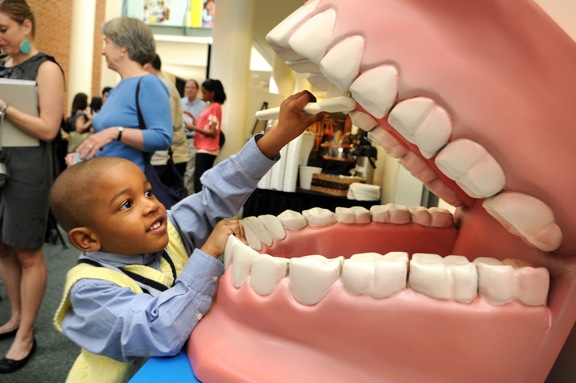


WORLD Oral Health Day (WOHD) is celebrated every year on the 20th March. It is an international day to celebrate the benefits of a healthy mouth and to promote worldwide awareness of the issues around oral health and the importance of looking after oral hygiene to everyone old and young.
It is a day for people to have fun – a day that should be full of activities that make us laugh, sing and smile! In Zimbabwe the cerebrations will take place at the Town house tomorrow Friday the 20th of March from 9am.
About 90% of the world’s population will suffer from oral diseases in their lifetime and many of them can be avoided with increased governmental, health association and society support and funding for prevention, detection and treatment programmes. This is why the commemorations of this day are important.
In addition, World Oral Health Day offers the dental and oral health community a platform to take action and help reduce the global disease burden.
This year efforts will be on wishing everybody a lifelong and healthy smile at all ages. The theme is “World Oral Health Day 2015, Smile for life!” and has a double meaning: ‘lifelong smile’ and ‘celebrating life’. In addition, it implies ‘positivity’ and ‘having fun’ as people only smile if they are happy and have a healthy life.
Everybody can take part in this initiative: health associations, specialist groups, member organizations and partners, governmental groups, students, teachers, the general public, at large etcetera.
Facts about Orofacial cancers
In general, cancers are divided into two groups, benign or malignant – based on their ability to move from the site of origin to other parts of the body. Benign cancers are locally destructive if left unchecked however malignant ones are capable of spreading to other regions. Recent studies by the World Health Organization showed that there has been an overall increase in the number of cancer cases world-wide.
This is also true of cancers that begin in the region of the face & mouth. In Zimbabwe, we are not unique to this problem and the most common oral cancer is squamous cell carcinoma- a malignant tumor contributing significantly to the deaths and disability in the country. It is a major health concern as it is further exacerbated by the limited health literacy about the disease by the majority of the population.
Most people are not aware that cancer can occur in the oral cavity, later on the signs and symptoms, treatment modalities, what puts them at risk and where to get help. As a result most people report to a health facility with severe disease that has already progressed to other organs. It is important to note that awareness of the disease leads to early diagnoses and treatment.
Research shows that if caught early an individual has a 5 year cancer free survival rate of 85%. There are several risk factors which increase ones chance of developing the disease however it may still occur in anyone. The community needs to be aware that the use of nicotine either through cigarette smoking, chewing tobacco or using snuff is a major risk factor for developing the disease.
Cigarette smokers are two times more likely to get oral cancer than non-smokers and for tobacco chewers the risk doubles. Excessive alcohol consumption alone has also been associated with a two times risk of developing cancer and if the individual also smokes the risk jumps to fifteen times.
Other risk factors include excessive exposure to ultraviolet radiation, iron deficiency and Human papillomavirus infection. Elderly age groups and those whose immune system has been compromised are also vulnerable. Oral cancer may present as a non-healing sore, a lump, a mass or a red or white patch of the oral mucosa which may or may not be painful but does not resolve in a period of 2 weeks even with use of pharmaceutical drugs. Other signs include painful, shifting or loosening of one or multiple teeth that are not rotten, severe pain of the jaw at times associated with earache or headache, numbness of the jaw and limited mouth opening.
The individual should immediately visit the nearest Dentist and if not present to a Physician who can refer them to the right place. Treatment for oral cancer includes surgical removal followed by radiation and or chemotherapy. World over, the risk factors have been known from as early as 1954 but no significant decrease in the overall death rates. This suggests that for us as a nation to fight the disease, people need to be more conscientious about checking our mouths for any abnormalities and seeking help as soon as possible.